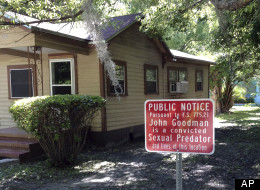
Certainly the most shocking story of the week comes from Cleveland, where Ariel Castro has been charged with abducting three women, sexually abusing them, and holding them captive for ten years. CNN has the basics here. One important legal question is whether Castro could be eligible for the death penalty, based on allegations that he impregnated one of the women, then deprived her of food and punched her in the stomach repeatedly, causing her to miscarry. As Sentencing Law and Policy explains here, Ohio’s murder statute encompasses causing “the death of another or the unlawful termination of another’s pregnancy,” seemingly opening the door to a capital prosecution.
In other news:
- Taxes on attorneys’ fees. The Republican leadership of the General Assembly has unveiled a plan to reduce state income tax rates but to expand the state sales tax to services, which generally aren’t covered now. The expansion would include lawyers’ fees, as the News and Observer reports here. Defense lawyers with substantial retained practices, what effect would the reform have on you?
- New judge. The News and Observer notes here that Governor McCrory has appointed Assistant District Attorney Ebern “Trip” Watson III a special superior court judge. Congratulations to Judge Watson.
- Judge Judy. Speaking of judges, though, Reader’s Digest is reporting that a TV judge, Judge Judy, received a higher popular approval rating than any of the nine sitting Supreme Court justices. (Crime and Consequences.) Sign of the apocalypse?
- Supreme Court. Speaking of the Supreme Court, and apocalypses, it came out this week that the Court has – or at least, had – plans to convene at the Grove Park Inn in Asheville in the event of a nuclear attack on Washington. The Wall Street Journal reports here on the scheme, developed in 1956. The Inn’s marketing director says “there’s no termination date [on the agreement with the Court], so it really is up to the Supreme Court whether they enforce it or not. As far as the Grove Park Inn is concerned, we would be happy to welcome the court.”
- Gun news. A number of media outlets, including Gizmodo here, covered the recent firing of the world’s first entirely 3-D printed gun. Lawmakers are considering regulating or prohibiting such products, but that raises some interesting questions. For example, does Congress have authority under the Commerce Clause, or some other provision, to regulate the manufacture of guns entirely in one’s garage? Dust off the home grown wheat case and discuss. Meanwhile, I had a bit part in an interesting WRAL story about the effectiveness – or ineffectiveness – of the NICS background check system at preventing people with serious mental illnesses from gaining access to firearms. You can see the story here.
- Finally, sex offenders. The Associated Press reports here on efforts by the Bradford County, Florida Sheriff to place signs in the yards of convicted sex offenders reading “[Name] is a convicted sexual predator and lives at this location.” An example is pictured below. Post a comment if you have a perspective on the desirability or legality of this practice.

